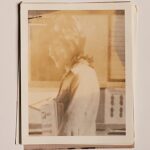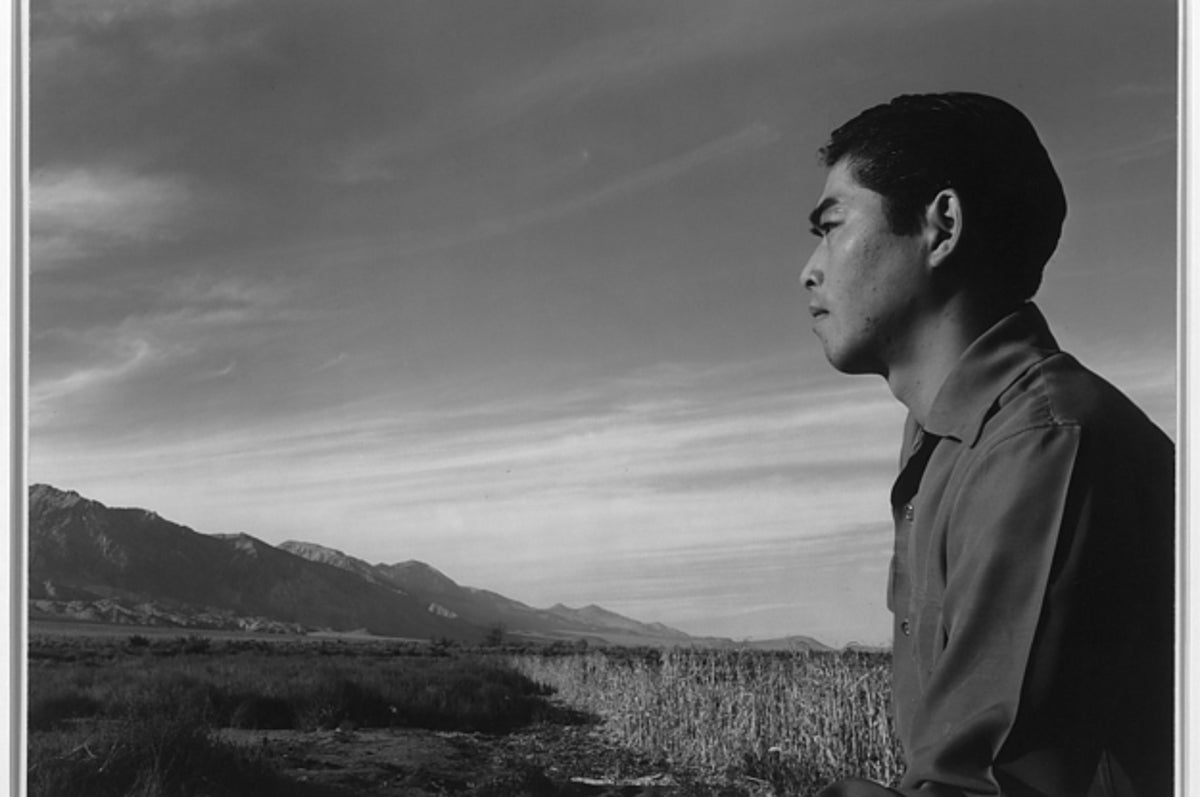
[ad_1]

Ansel Adams / Library of Congress
Tom Kobayashi at the Manzanar Relocation Center internment camp in California.
At a time when the Asian American community is facing an increase in hate crimes, it’s crucial to confront the long legacy of racism within the United States. One of the most glaring examples would be the incarceration of Japanese Americans by the federal government, which began after the Pearl Harbor attack and continued throughout World War II.
Tōyō Miyatake was a photographer who was incarcerated at the Manzanar War Relocation Center in California in 1942, one of 10 detention camps. He had purchased his own photography studio in 1923 in the Little Tokyo section of Los Angeles. Back then, still life art photography was his first love, according to his grandson Alan Miyatake, who maintains his grandfather’s photography studio today.
At the time of the incarceration, Tōyō Miyatake decided that as a photographer, it was his duty to document what was happening to his community. He smuggled a lens and a film holder into the camp, and he built a camera himself. “At some point in that first year, he showed his son Archie (my dad) the camera and told his son that it was his duty to document this in the hopes that it will never happen again,” Alan said.
“In the family’s early days at the camp, he was photographing scenes around the camp only at sunset and sunrise, so he wouldn’t be seen,” Alan said. Other photographers working for the US government and the Works Progress Administration came to the camp as well — most notably the nature photographer Ansel Adams and photographer Dorothea Lange. Both photographed Manzanar as a part of their work documenting America for the WPA. Miyatake and Adams had been friends in the photography world before Miyatake was incarcerated. According to Alan, the men who ran the detention camp were big fans of Adams’ work for the Sierra Club, and through Miyatake’s connection with Adams, he was eventually appointed the official photographer at Manzanar.
We’ve collected a series of images below that chart the experience of Japanese Americans during that period. For more photography stories like this, and a full interview with Alan Miyatake about his grandfather’s life and legacy at Manzanar, sign up for our newsletter below.
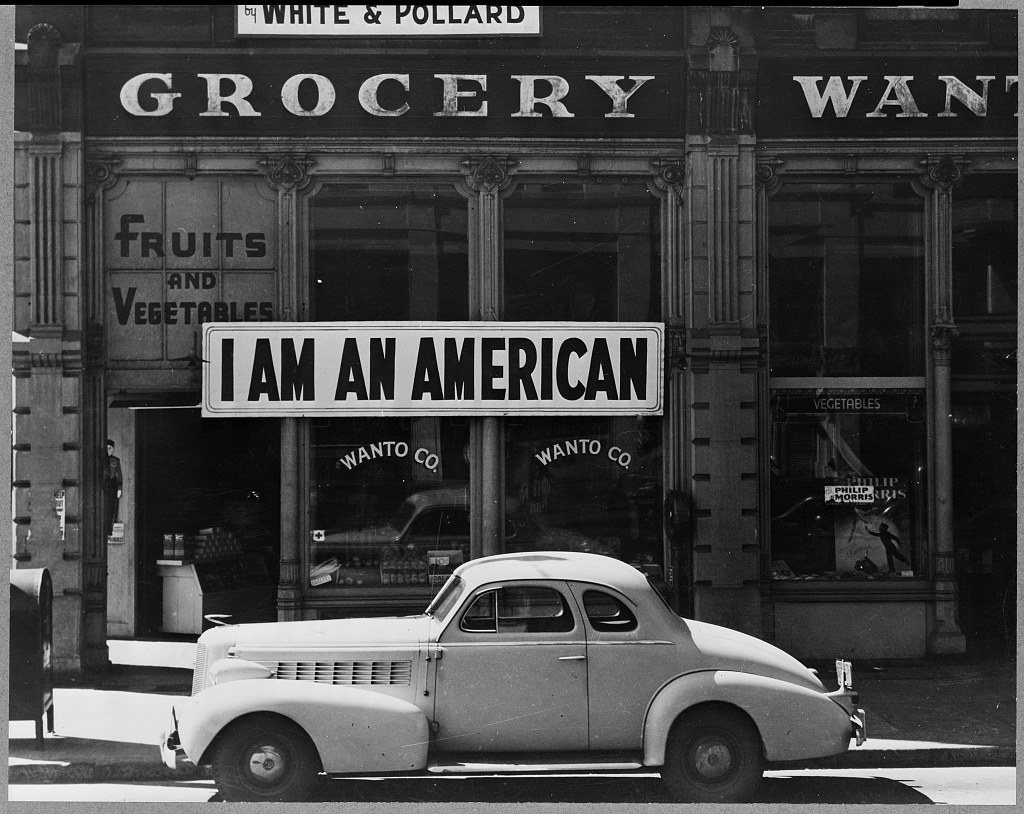
Dorothea Lange, via the Library of Congress
A large sign reading “I am an American” placed in the window of a store in Oakland, California in on Dec. 8, 1942, the day after Pearl Harbor. The store was closed following orders to persons of Japanese descent to evacuate from certain West Coast areas. The owner, a University of California graduate, was to be incarcerated with hundreds of people in centers for the duration of the war.
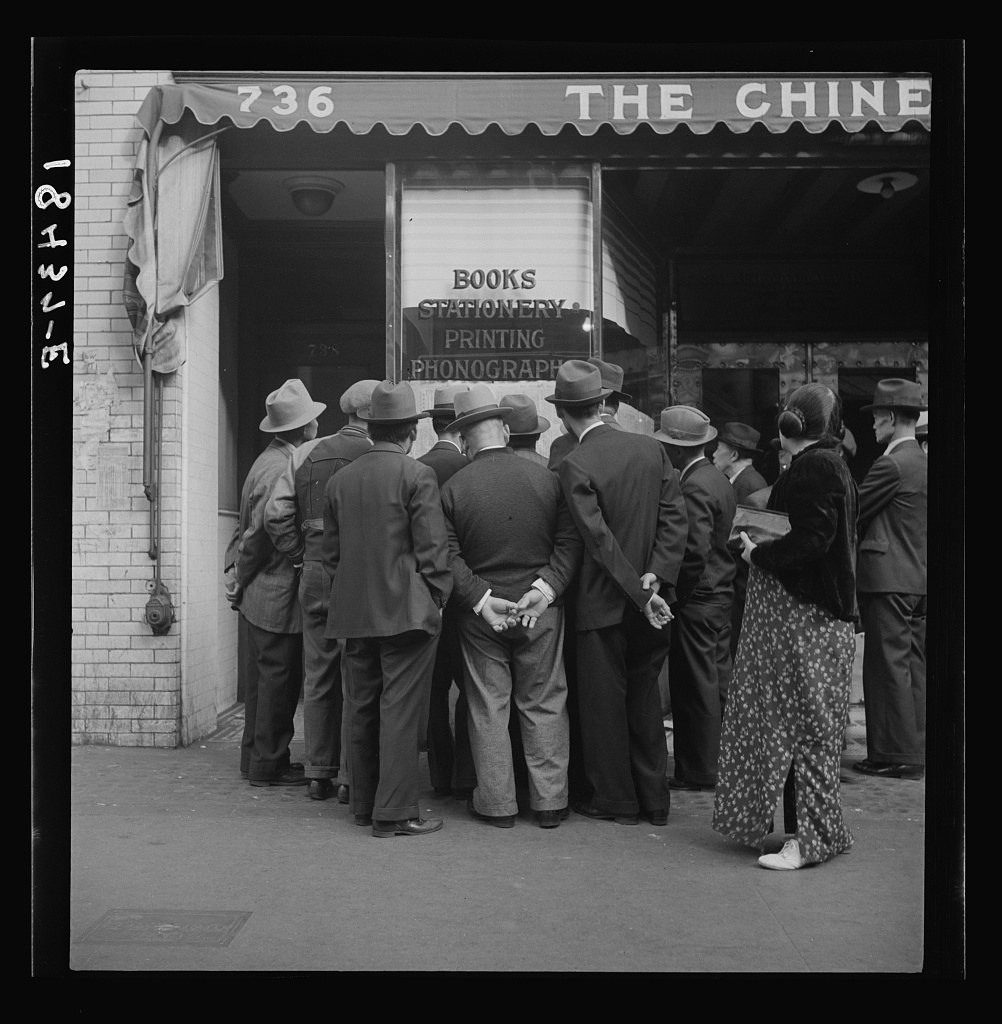
Dorothea Lange, via the Library of Congress
In front of the local paper of San Francisco’s Chinatown, people read news of the surrender of Canton to the Japanese in 1938. Most of San Francisco’s Chinese population were Cantonese.
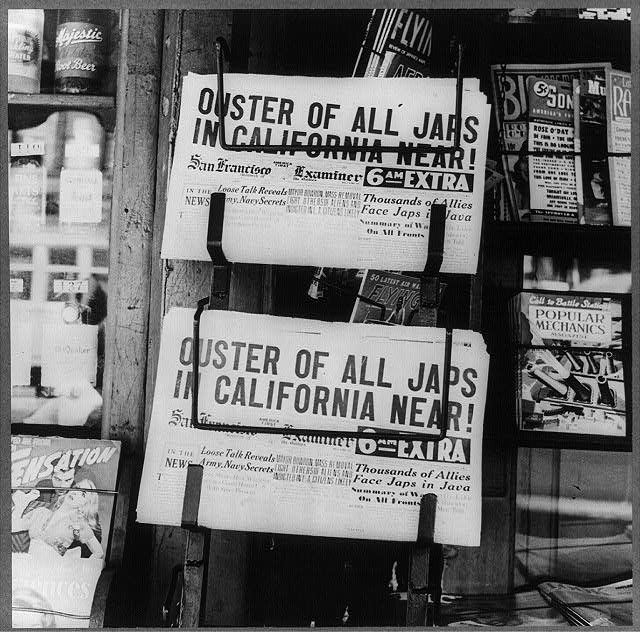
Dorothea Lange, via the Library of Congress
The newspapers in Oakland, 1942.

Dorothea Lange, via the Library of Congress
Residents of Japanese ancestry appearing at the civil control station in San Francisco in1942 for registration in response to the Army’s exclusion order No. 20.
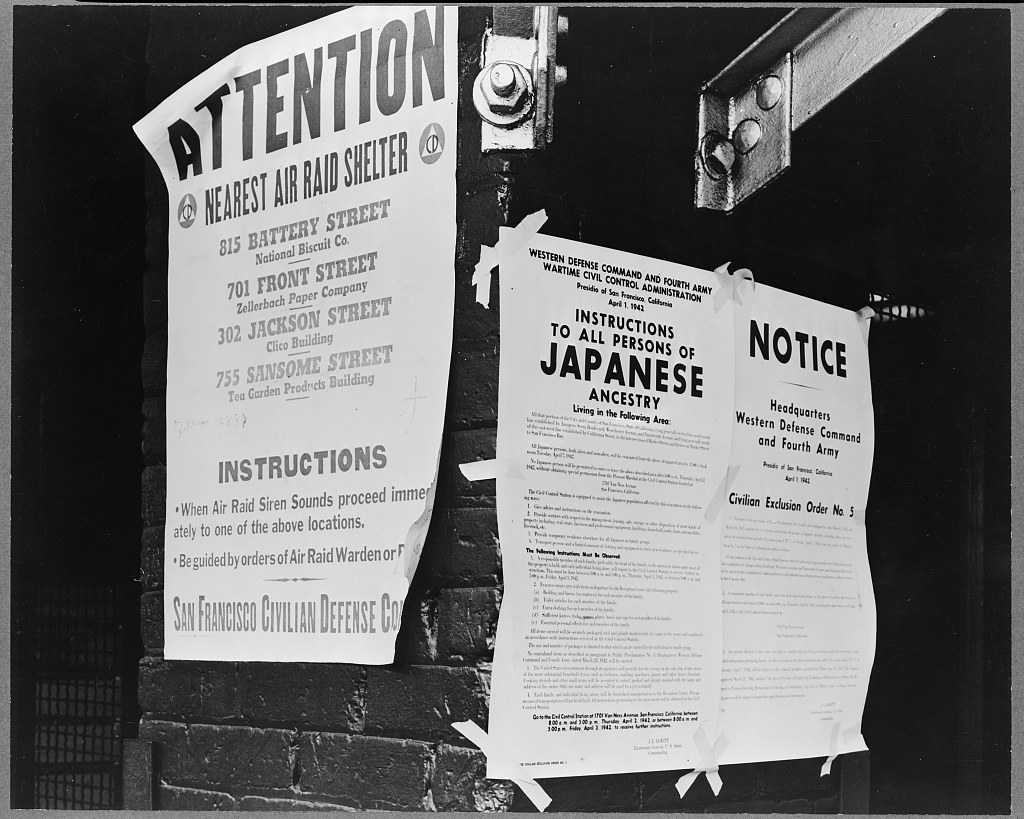
Dorothea Lange, via the Library of Congress
Civilian exclusion order #5, posted at First and Front streets, directing removal by April 7 of persons of Japanese ancestry, from the first San Francisco section to be affected by evacuation.
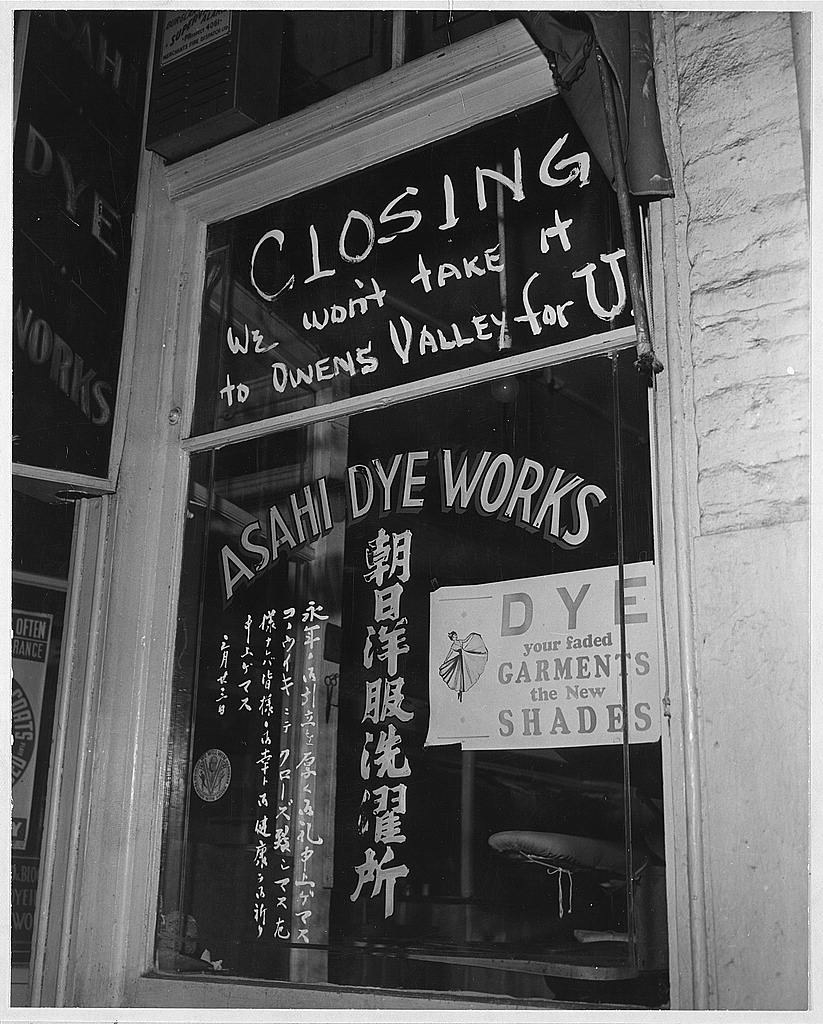
Clem Albers, via the Library of Congress
A shop just before Japanese Americans were evacuated from “Little Tokyo” in Los Angeles in1942. The shop window of Asahi Dye Works with sign reading: “Closing, we won’t take it to Owens Valley for U.”
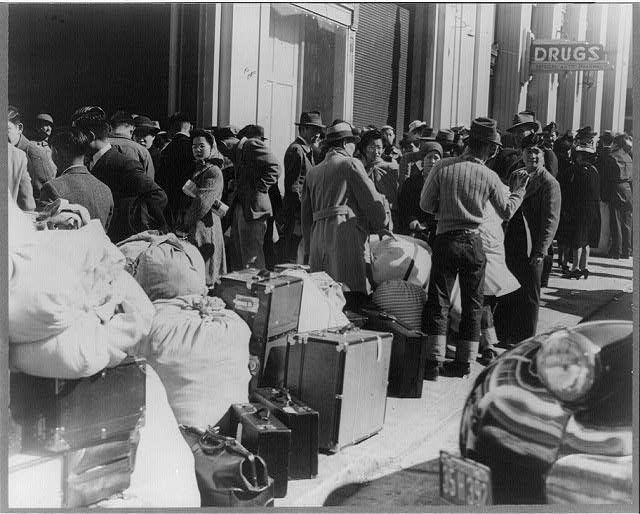
Dorothea Lange, via the Library of Congress
Residents of Japanese ancestry awaiting the bus at the Wartime Civil Control station in San Francisco in April 1942
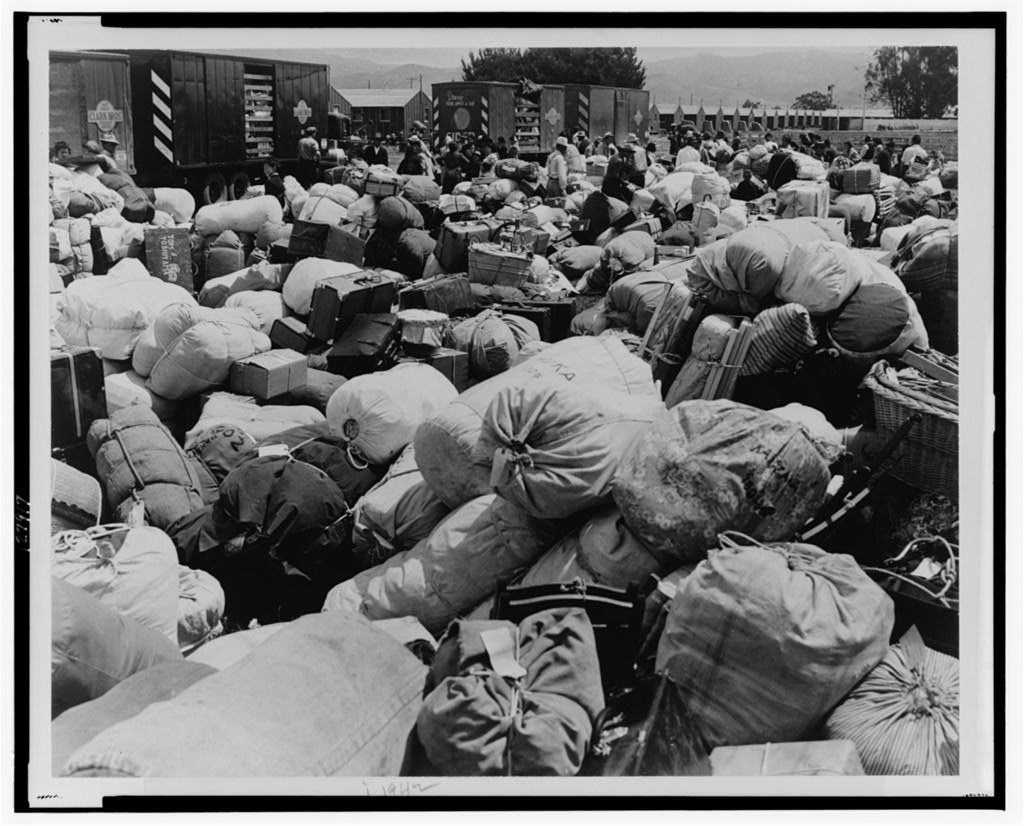
Dorothea Lange, via the Library of Congress
Baggage belonging to evacuees of Japanese ancestry at an assembly center in Salinas, California, prior to moving to an incarceration center.
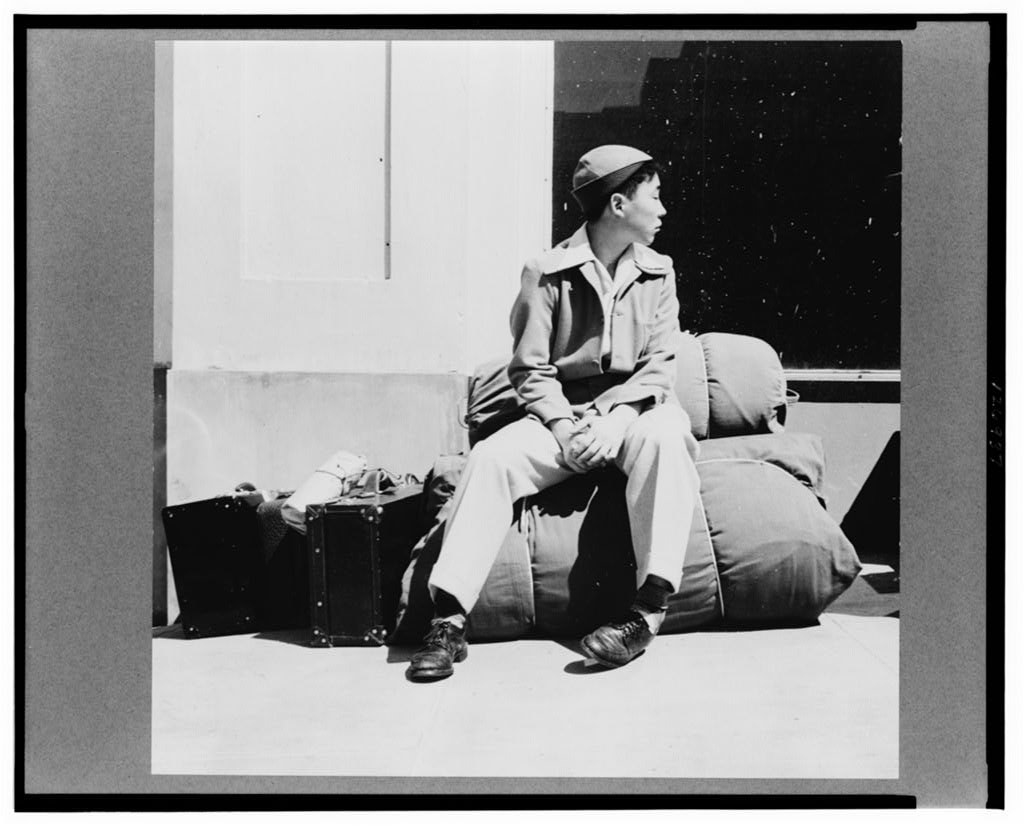
Dorothea Lange, via The Library of Congress
A Japanese-American boy, part of the first contingent of 664 residents of Japanese ancestry to be removed from San Francisco.
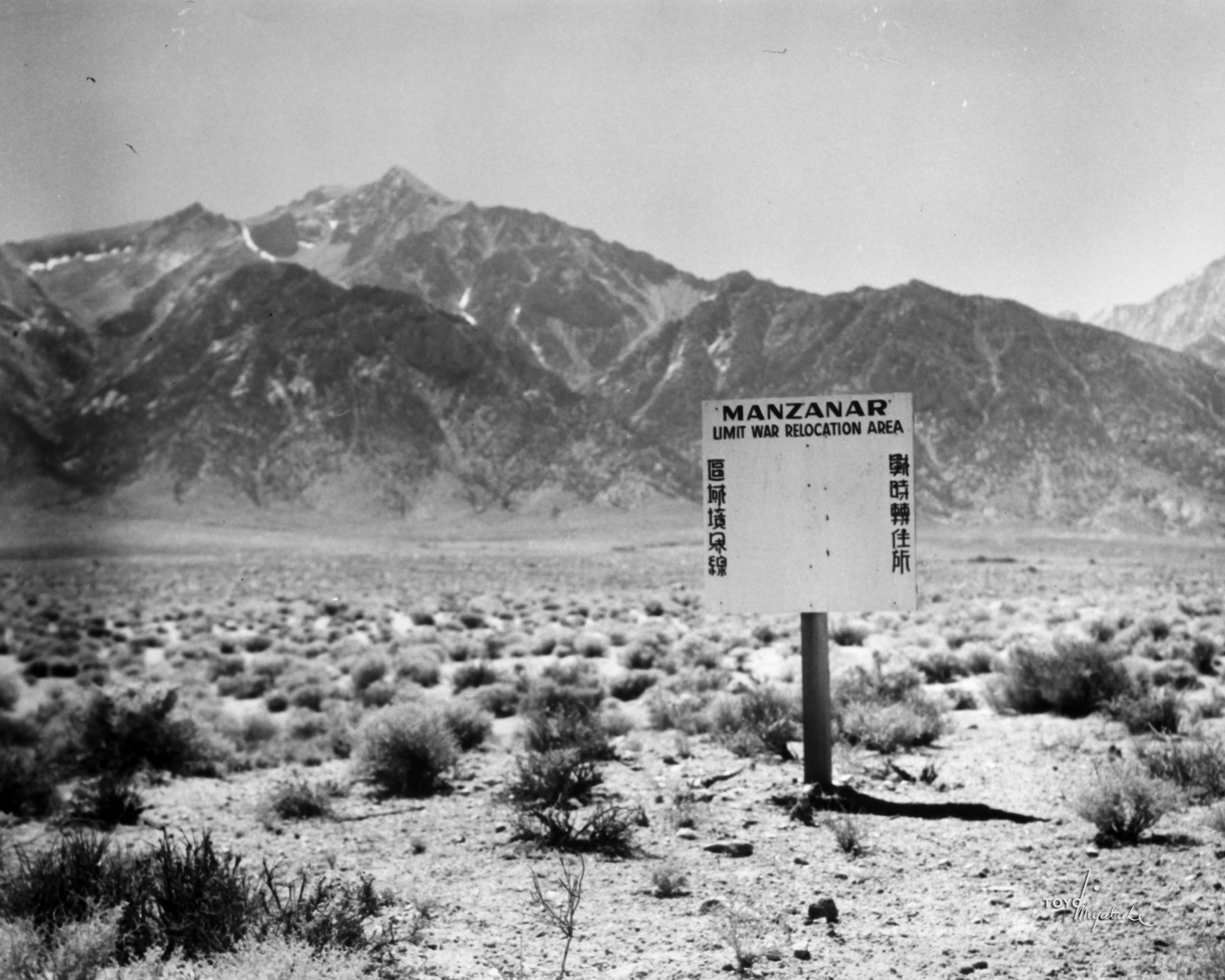
Toyo Miyatake
Toyo Miyatake, a photographer interned at the Manzanar Camp, smuggled a lens and a film holder to Manzanar with him and built a camera while he was there.
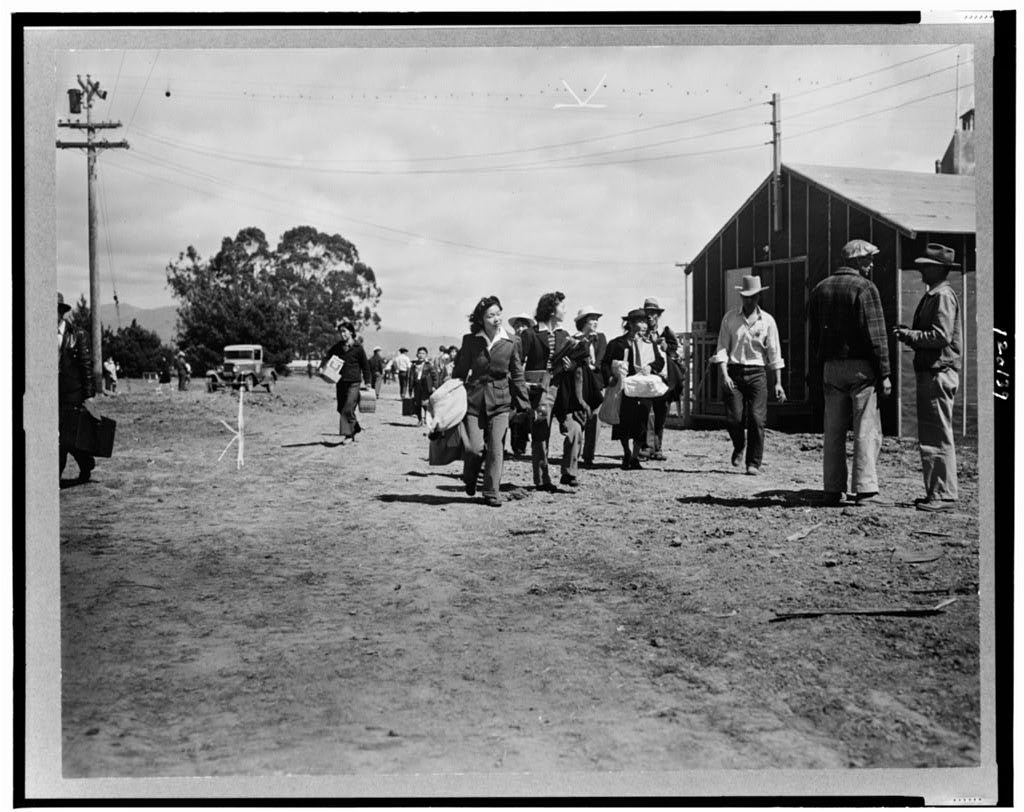
Clem Albers, via the Library of Congress
A family of Japanese descent arriving at an assembly center prior to their transfer to an incarceration center for the duration of the war in Salinas in 1942.
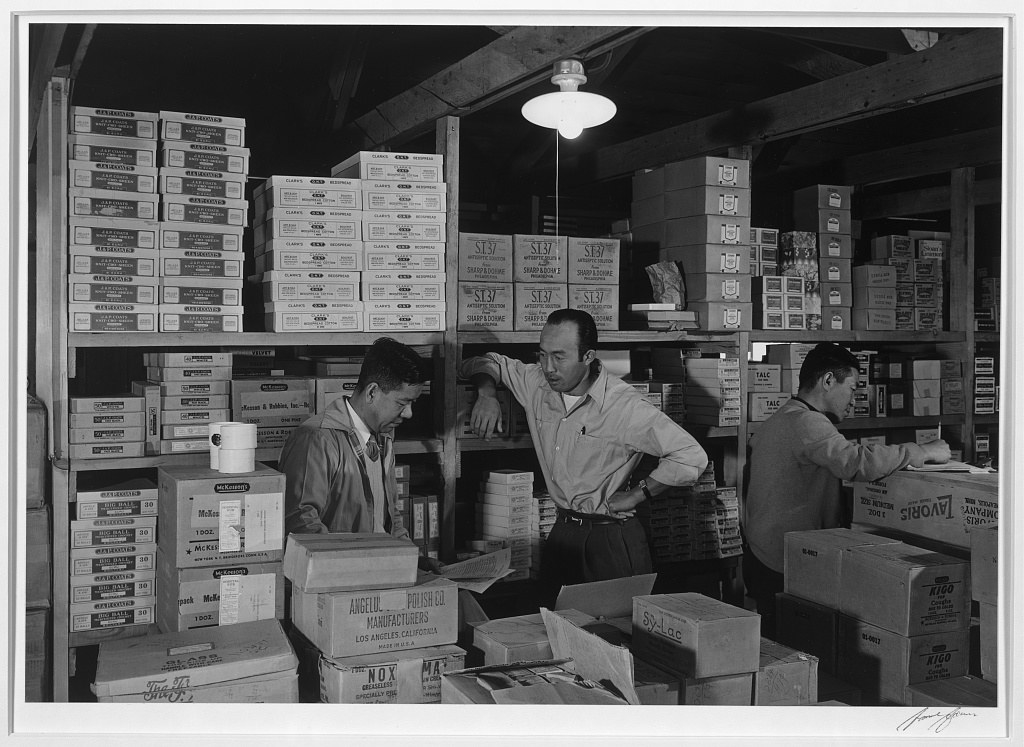
Ansel Adams / Library of Congress
Warehouse managers at the Manzanar incarceration camp.

Ansel Adams, via the Library of Congress
Incarcerated farm workers harvesting crops in a field with mountains in the background at the Manzanar camp in 1943.
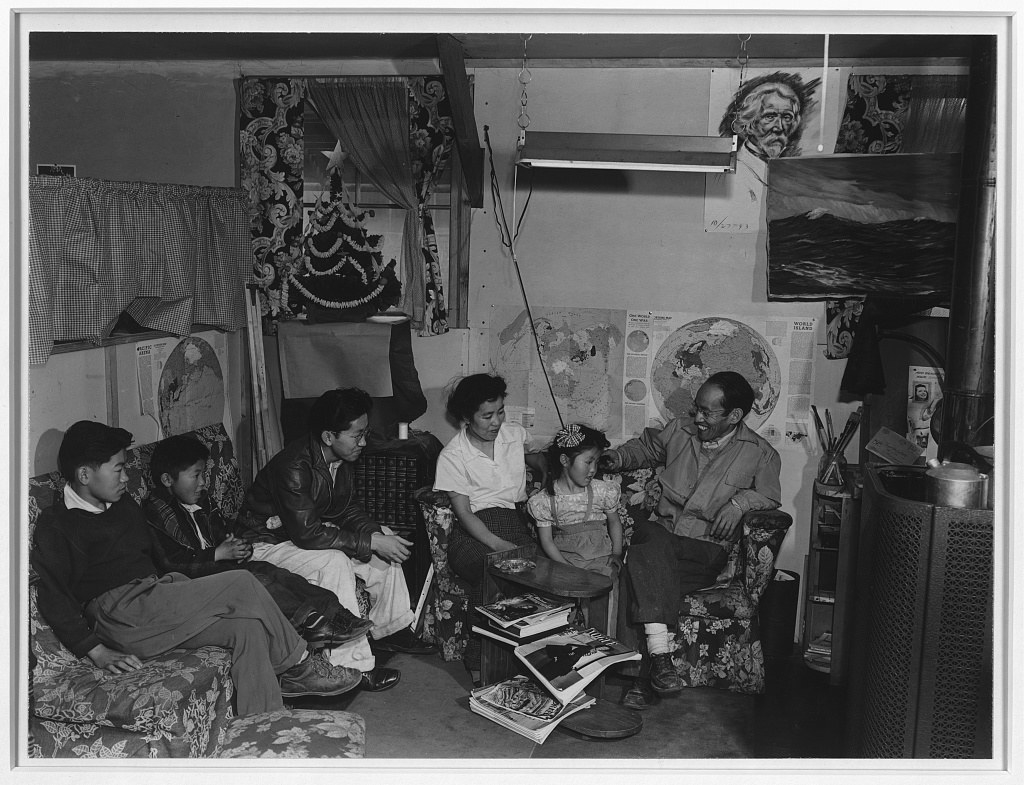
Ansel Adams / Library of Congress
Tōyō Miyatake and his wife, seated in their living room looking at their daughter seated between them, with three boys seated on couch at the Manzanar camp.
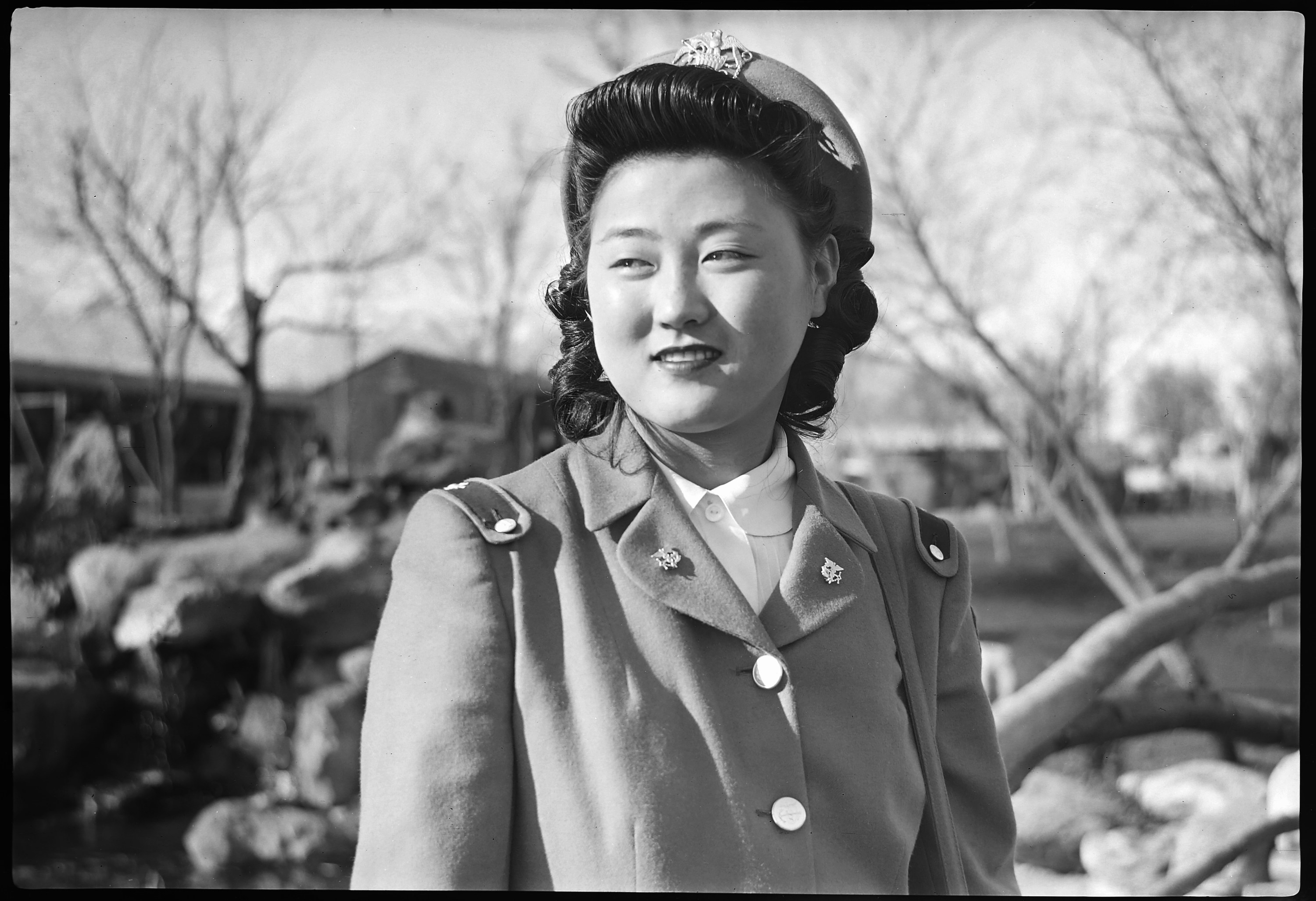
Toyo Miyatake Studio
A young woman in Manzanar.

Ansel Adams, via the Library of Congress
Akio Matsumoto, commercial artist, painting a sign at the Manzanar camp.

Dorothea Lange, via the Library of Congress
Ester Naite, an office worker from Los Angeles, is shown operating an electric iron in her quarters at Manzanar.

Ansel Adams, via the Library of Congress
Group of girls standing in line formation, each one reaching both of her arms straight out to the side doing calisthenics at the Manzanar camp.
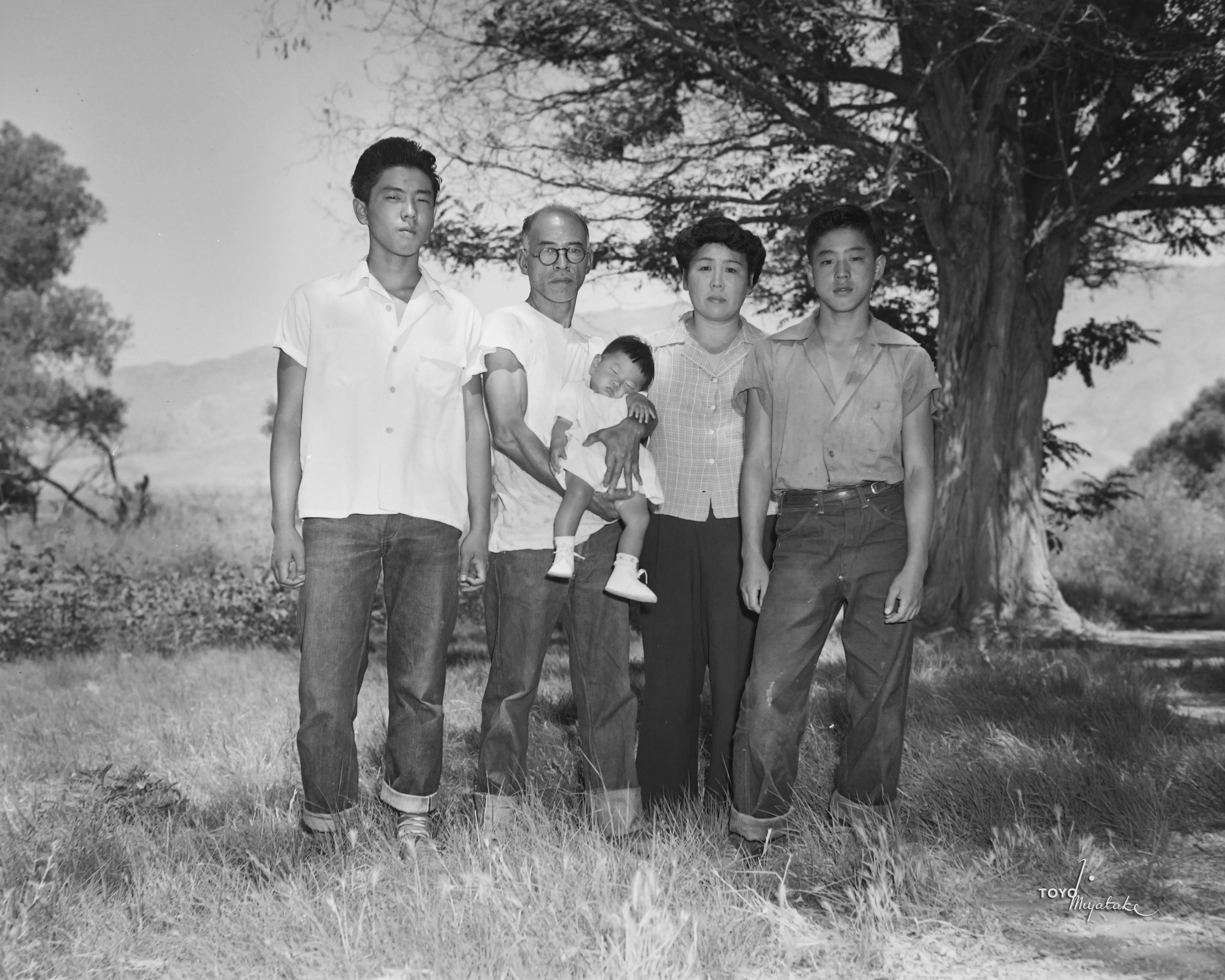
Toyo Miyatake
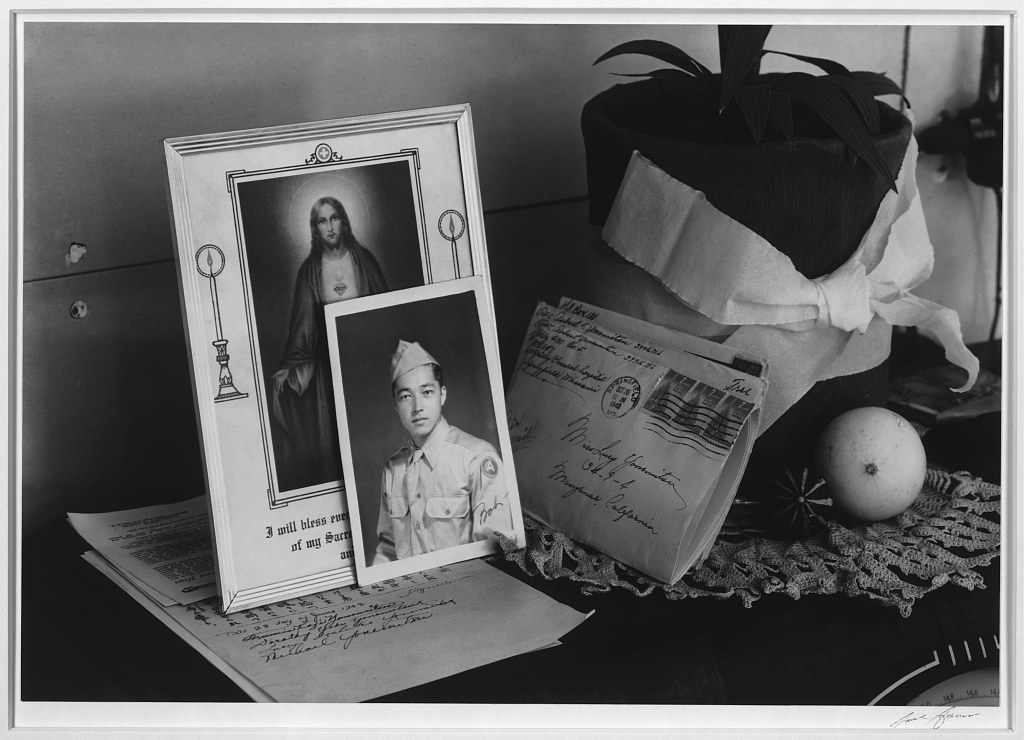
Ansel Adams, via the Library of Congress
Autographed photograph, religious card, stamped envelopes, ornamental squash and a potted plant on doily on a table top at the Yonemitsu home in Manzanar.
[ad_2]
Source link





